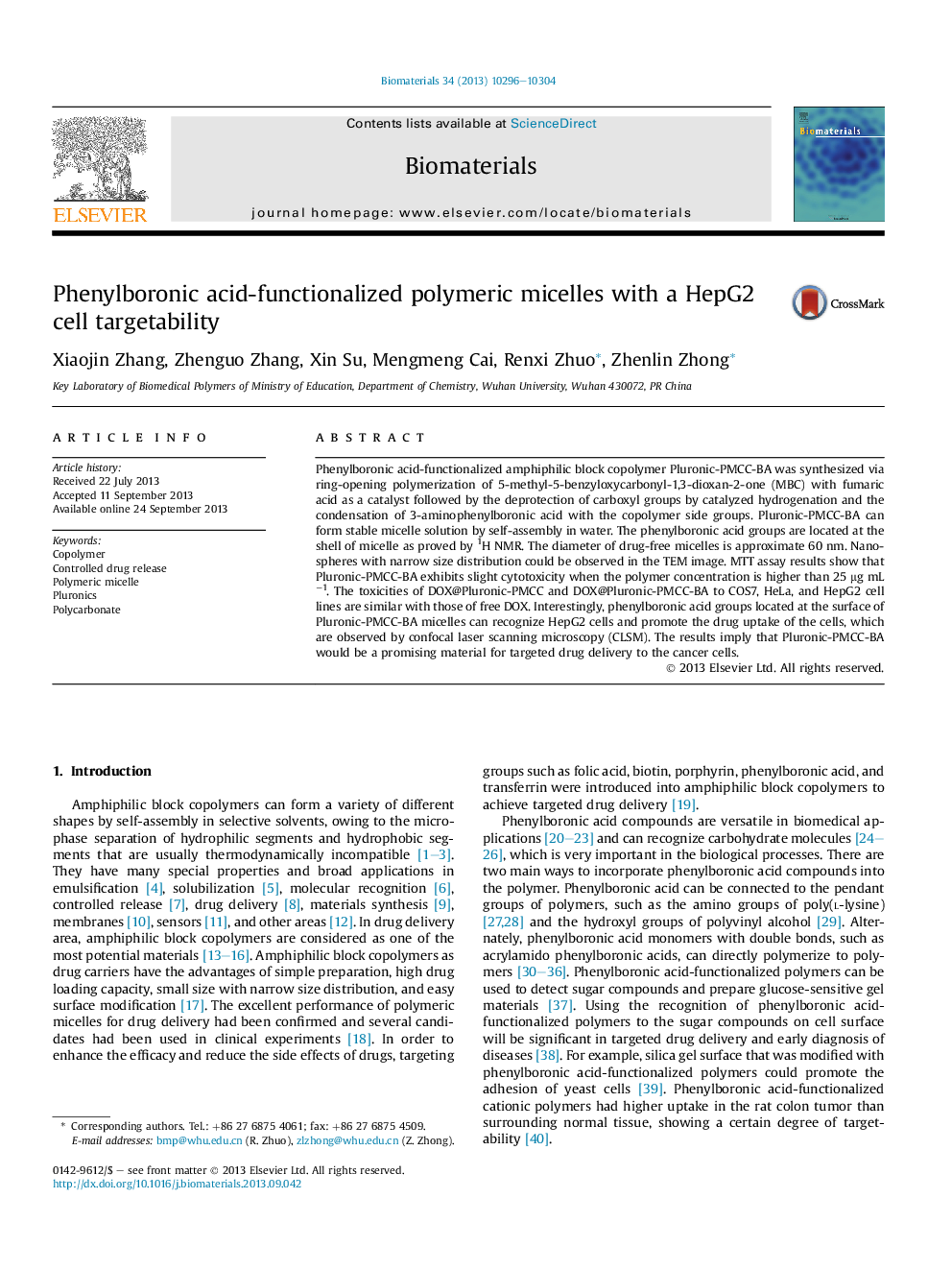| Article ID | Journal | Published Year | Pages | File Type |
|---|---|---|---|---|
| 10228186 | Biomaterials | 2013 | 9 Pages |
Abstract
Phenylboronic acid-functionalized amphiphilic block copolymer Pluronic-PMCC-BA was synthesized via ring-opening polymerization of 5-methyl-5-benzyloxycarbonyl-1,3-dioxan-2-one (MBC) with fumaric acid as a catalyst followed by the deprotection of carboxyl groups by catalyzed hydrogenation and the condensation of 3-aminophenylboronic acid with the copolymer side groups. Pluronic-PMCC-BA can form stable micelle solution by self-assembly in water. The phenylboronic acid groups are located at the shell of micelle as proved by 1H NMR. The diameter of drug-free micelles is approximate 60 nm. Nano-spheres with narrow size distribution could be observed in the TEM image. MTT assay results show that Pluronic-PMCC-BA exhibits slight cytotoxicity when the polymer concentration is higher than 25 μg mLâ1. The toxicities of DOX@Pluronic-PMCC and DOX@Pluronic-PMCC-BA to COS7, HeLa, and HepG2 cell lines are similar with those of free DOX. Interestingly, phenylboronic acid groups located at the surface of Pluronic-PMCC-BA micelles can recognize HepG2 cells and promote the drug uptake of the cells, which are observed by confocal laser scanning microscopy (CLSM). The results imply that Pluronic-PMCC-BA would be a promising material for targeted drug delivery to the cancer cells.
Related Topics
Physical Sciences and Engineering
Chemical Engineering
Bioengineering
Authors
Xiaojin Zhang, Zhenguo Zhang, Xin Su, Mengmeng Cai, Renxi Zhuo, Zhenlin Zhong,
